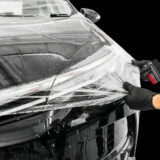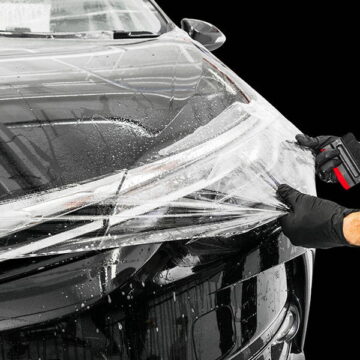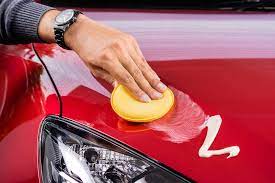Have you ever been stuck with a nut or bolt that just won’t budge? You’ve likely heard the phrase “penetrating oil” thrown around – but what is it, and how does it work? If you’re looking to get to the bottom of these questions, then stay tuned! In this blog post, we’ll cover everything about penetrating oil – from its composition and uses all the way down to best-practice application tips. So, if you want your toughest bolts and nuts loosening up in no time flat, read on!
Penetrating Oil – What is it and How Does it Work
Have you ever struggled with stuck bolts or rusted metal parts? If so, you’re not alone. Luckily, there’s a solution: penetrating oil. But with so many options on the market, how do you know which one is the best? The answer lies in understanding how penetrating oil works. Essentially, it’s a lubricant that is designed to seep into the microscopic spaces between metal parts, breaking down rust and corrosion and making it easier to loosen them. The best penetrating oil should be both powerful enough to dissolve rust and gentle enough to not damage the metal itself. So, if you’re looking for a solution to tackle tough rusted-on bolts or squeaky hinges, look no further than the right penetrating oil. It’s sure to make your DIY and repair tasks a breeze.
Uses of Penetrating Oil for Home Maintenance and Repair
Maintaining and repairing your home can be a daunting task, especially if you’re not equipped with the right tools and products. Luckily, penetrating oil is one product that can make a significant difference in your home maintenance routine. This type of oil is commonly used to loosen rusted bolts, nuts, and screws that are impossible to remove by hand. It can also be used to lubricate various mechanical parts, protect metal surfaces from moisture and corrosion, and even remove grime and dirt buildup. With these benefits, it’s no wonder that penetrating oil is a must-have item in any DIY enthusiast’s toolkit. Whether you’re working on a small project or a major home repair, incorporating penetrating oil into your maintenance routine can save you time, money, and a whole lot of frustration.
Advantages of Using Penetrating Oil
Good penetrating oil is a true lifesaver when it comes to loosening up rust and other pesky materials that cause mechanical components to seize up. This type of oil is specifically designed to penetrate deep into tight spaces and crevices to dissolve rust and debris while lubricating the surface area. One of the most significant advantages of using penetrating oil is how it speeds up the repair process for a rusty or corroded metal part. In many cases, this oil can also eliminate the need for costly replacements of parts that are difficult to remove or access. Whether you’re looking to prevent corrosion or restore an old vehicle, good penetrating oil can make all the difference in the world.
Safety Considerations for Using Penetrating Oil
When it comes to using penetrating oil, there are several safety considerations that should be taken into account. First and foremost, it’s important to always wear gloves and eye protection when working with any type of oil. This will help to prevent any accidental spills from coming into contact with your skin or eyes. Additionally, it’s important to work in a well-ventilated area to avoid inhaling any potentially harmful fumes. It’s also a good idea to keep a fire extinguisher nearby, just in case. By following these simple safety precautions, you can ensure that your experience using penetrating oil is both safe and successful.
Preparing to Use Penetrating Oil – Materials Needed
Before diving into the world of penetrating oil, it’s essential to have the right materials on hand to ensure you have a smooth and efficient experience. The first item on the list is penetrating oil itself, of course. A sturdy pair of safety gloves will also come in handy, protecting your hands from any chemical reactions or sharp edges. It’s also wise to invest in a container that can hold the penetrating oil while you’re working with it, and a rag to wipe up any residue left behind. Lastly, a set of basic hand tools, such as pliers or a wrench, may prove to be beneficial as you dismantle any parts coated in the stubborn substances. Armed with these tools, you’ll be ready to tackle any rusted or seized bolts with ease.
Step-By-Step Instructions for Applying Penetrating Oil
Applying penetrating oil may seem like a daunting task, but with these step-by-step instructions, you’ll be able to do it with ease. First, ensure the surface you want to apply the oil to is clean and dry. Next, shake the oil container well before applying a small amount of it onto a clean cloth. Then, use the cloth to generously apply the oil onto the desired surface. Be sure to let it sit for a few moments allowing the oil to penetrate deep into the material. Finally, wipe any excess oil with a clean cloth, and you’re done! Following these simple steps can help prolong the life of your tools and machinery, making this task an important one to add to your maintenance routine.
In summary, understanding how to properly use penetrating oil can be a useful tool for any homeowner in maintaining and repairing their home. From coatings, machines, vehicle parts, and more, it’s a miraculous product that has saved many from broken bolts and seized screws. But with great power comes great responsibility – safety must always come first when using penetrating oil. Wear gloves, eye protection, masks, and ventilation when using penetrative oil so you can avoid any hazards. At the same time, always have the necessary materials to successfully apply penetrating oil with ease. Ultimately, underwater testing is crucial for ensuring the best results when applying penetrative oil – remember to proceed only if the solution passes an underwater test as suggested by experts

















